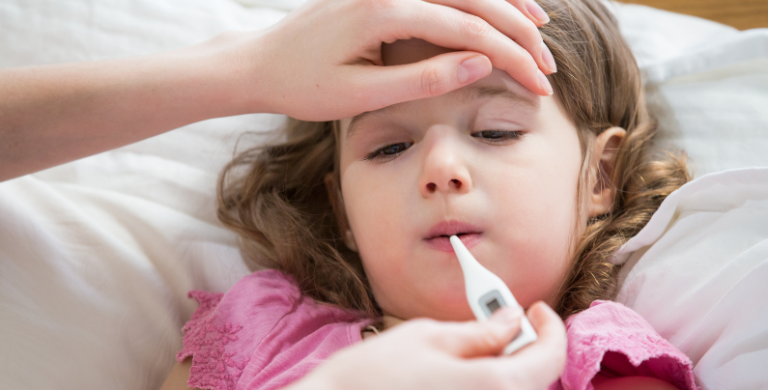The only symptoms in very young infants with RSV may be irritability, decreased activity, and breathing difficulties. RSV is a significant cause of respiratory illness in children, and it causes infections of the lungs and respiratory tract.
What are the symptoms of RSV in children?
The early phase of RSV in babies and young children is often mild, like a cold. In children younger than three, the illness may enter the lungs and cause coughing and wheezing. In some children, the infection turns into a severe respiratory disease. The most common symptoms of RSV include:
- Runny nose
- Fever
- Cough
- Short periods without breathing (apnea).
- Trouble eating, drinking, or swallowing.
- Wheezing
- Flaring of the nostrils or straining of the chest or stomach while breathing.
- Breathing faster than usual or trouble breathing.
- Turning blue around the lips and fingertips.
- Sore throat
- Mild headache
- Unusual tiredness (lethargy).
- Irritability
What are the complications of RSV?
- Hospitalization. A severe RSV infection may require a hospital stay to monitor and treat breathing problems.
- Pneumonia. RSV is the most common cause of inflammation of the lungs (pneumonia) or the lungs’ airways (bronchiolitis) in infants.
- Middle ear infection. If germs enter the space behind the eardrum, the child can get a middle ear infection (otitis media).
- Asthma. There may be a link between severe RSV in children and the chance of developing asthma later in life.
What are the causes of RSV?
RSV is spread when a child encounters fluid from an infected person’s nose or mouth. This can happen if a child touches a contaminated surface and touches their eyes, mouth, or nose. It may also occur when inhaling an infected person’s sneezing or cough droplets. However, an infected person is most contagious the first week after infection. But in infants and those with weakened immunity, the virus may continue to spread even after symptoms go away, for up to four weeks.
Which children are at risk for RSV?
A child is more at risk for RSV if they are around others with the virus. Children who attend childcare centres or have siblings who attend school are at a higher risk of exposure and reinfection. RSV is more common in winter and early spring months. Children at increased risk of severe or sometimes life-threatening RSV infections include:
- Infants, especially premature infants or babies six months or younger.
- Children with heart disease present from birth (congenital heart disease) or chronic lung disease.
- Children or adults with weakened immune systems from diseases such as cancer or treatment such as chemotherapy.
- Children who have neuromuscular disorders, such as muscular dystrophy.
How to prevent RSV in children?
- Frequent handwashing. Teach your children the importance of handwashing.
- Avoid exposure. Cover your mouth and nose when you cough or sneeze. Limit your baby’s contact with people who have fevers or colds.
- Keep things clean. Make sure kitchen and bathroom countertops, doorknobs, and handles are clean.
- Don’t share drinking glasses with others. Use your glass or disposable cups when you or someone else is sick.
- Don’t smoke. Babies exposed to tobacco smoke have a higher risk of getting RSV and potentially more-severe symptoms. If you do smoke, never do so inside the house or car.
- Wash toys regularly. Do this, especially when your child or a playmate is sick.
When to consult a doctor for RSV?
Consult an Intercare doctor if your child has difficulty breathing, a high fever, or a blue colour to the skin, particularly on the lips and in the nail beds.
Sources
- https://www.cdc.gov/rsv/index.html#:~:text=Respiratory%20Syncytial%20Virus%20(RSV)%20Infection,for%20infants%20and%20older%20adults.
- https://www.mayoclinic.org/diseases-conditions/respiratory-syncytial-virus/symptoms-causes/syc-20353098
- https://kidshealth.org/en/parents/rsv.html
- https://www.cedars-sinai.org/health-library/diseases-and-conditions---pediatrics/r/respiratory-syncytial-virus-rsv-in-children.html#:~:text=What%20causes%20RSV%20in%20a,infected%20person's%20sneeze%20or%20cough.












